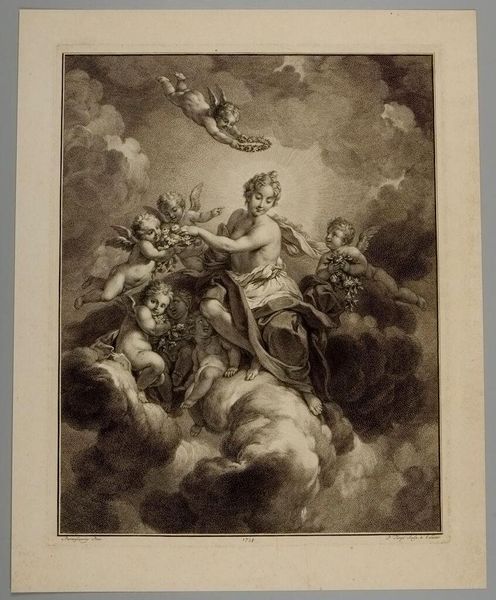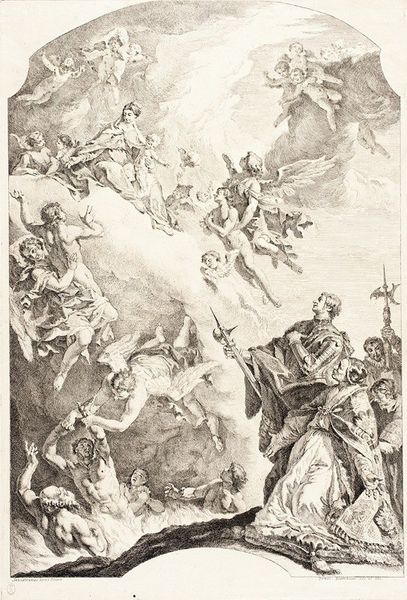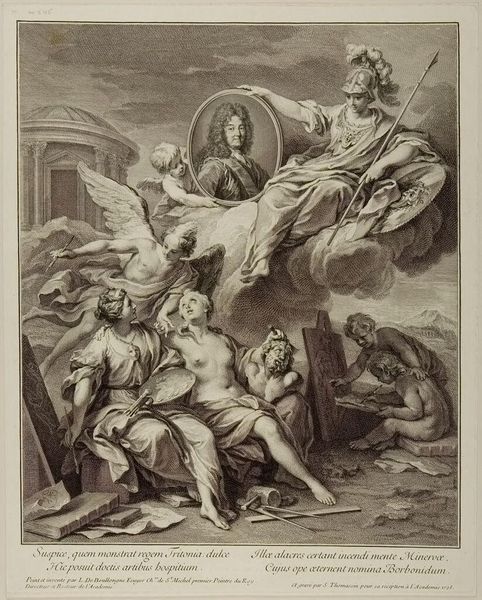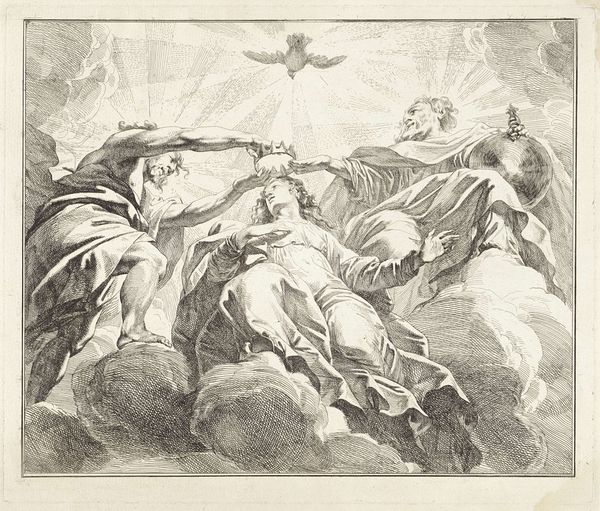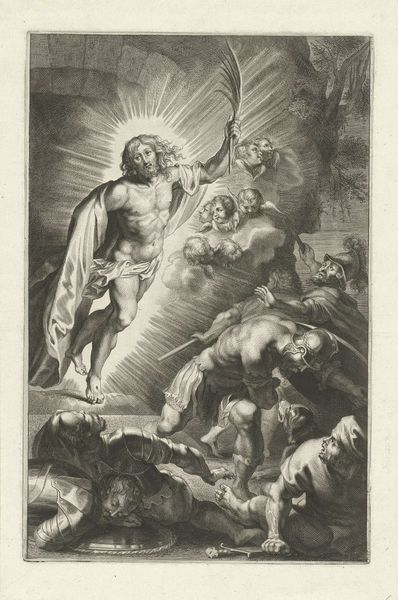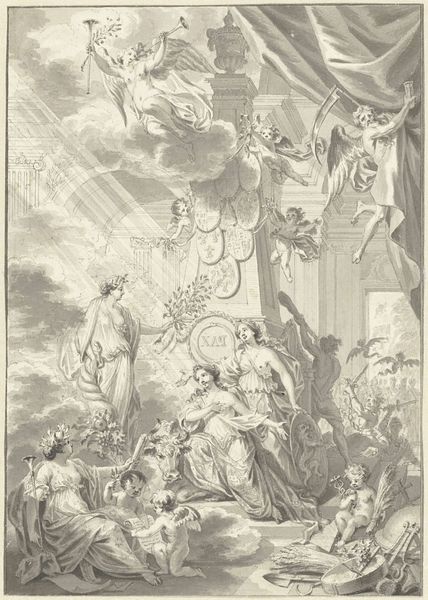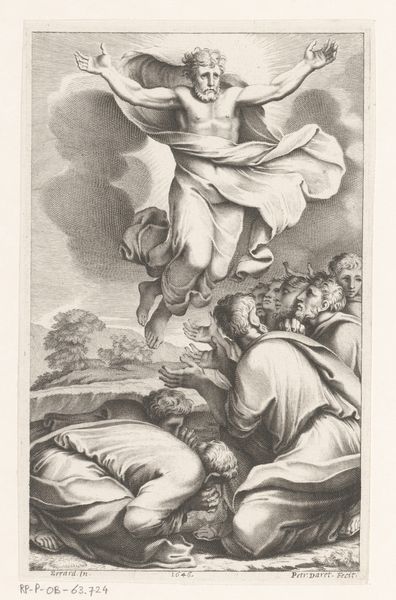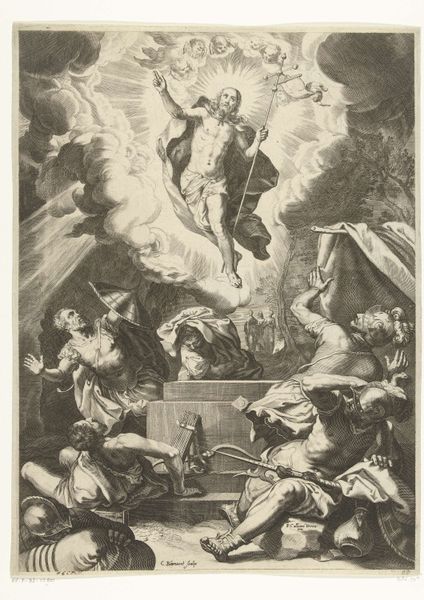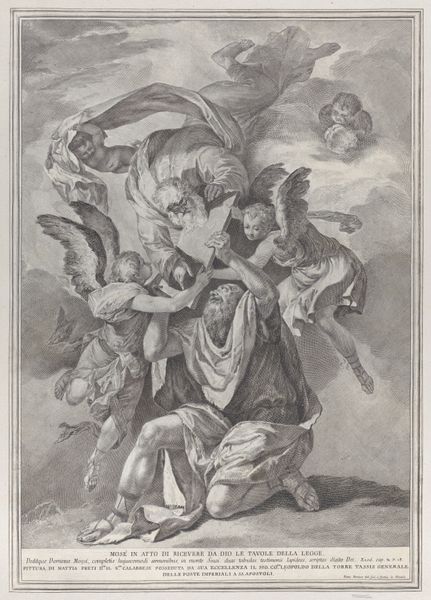
engraving
#
allegory
#
baroque
#
figuration
#
engraving
Dimensions: height 427 mm, width 339 mm
Copyright: Rijks Museum: Open Domain
Pieter Tanjé created this print, "Flora," using etching and engraving techniques sometime in the 18th century. Look closely, and you'll notice how the etched lines create delicate tonal variations, giving depth to Flora and the cherubic figures surrounding her. Tanjé's skilled hand with the engraving tool defines the forms and textures, from the soft, billowing clouds to the delicate floral arrangements. Both etching and engraving are laborious processes that require careful planning and execution. The artist had to apply a waxy ground to a metal plate, draw the image with a needle, and then immerse the plate in acid to bite the exposed lines. Engraving is even more physically demanding, as the artist uses a burin to cut lines directly into the metal. Consider that the image is reversed when printed, so the artist must work in reverse too. This print offered a way to disseminate imagery widely and cheaply. "Flora" shows how reproductive technologies, like etching and engraving, brought classical themes into the homes of a broader public. The artistry and labor involved elevate this print beyond mere reproduction, turning it into a valuable work of art in its own right.
Comments
No comments
Be the first to comment and join the conversation on the ultimate creative platform.
